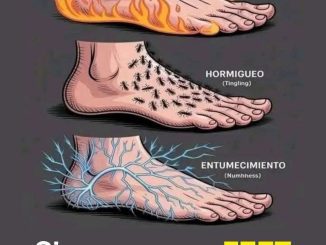The vintage Bicycle Freewheel Cassette Hub Removal Tool holds a unique and respected place in the history of cycling maintenance. As bicycles evolved from simple machines into more intricate ones, particularly during the mid-20th century when multi-speed bicycles gained popularity, the need for specialized tools to service and repair these machines became essential. This tool was instrumental in helping cyclists and mechanics maintain, repair, and replace one of the most crucial parts of the bicycle—the freewheel.
The History Behind the Freewheel Mechanism

With the rise of multi-speed bicycles, the cycling world was introduced to a new challenge—creating a system that allowed the rear wheel to keep spinning even when the cyclist wasn’t pedaling. This led to the development of the freewheel mechanism, a groundbreaking innovation that quickly gained widespread use in bicycles by the 1930s.
The freewheel mechanism made cycling more efficient by allowing the wheel to “coast” without forcing the rider to pedal continuously. As bicycle technology progressed and riders demanded more gears, the design of the freewheel became more complex. With this increasing complexity, cyclists and mechanics required a way to service the freewheel for regular maintenance or repairs. This necessity gave rise to the Bicycle Freewheel Cassette Hub Removal Tool.
The tool was specifically designed to help remove the freewheel from the bicycle’s rear hub, allowing cyclists to replace it, service it, or access other components like spokes and the hub itself. The introduction of this tool played a crucial role in keeping bicycles in optimal working condition, especially as the popularity of multi-speed bikes soared.
How the Vintage Freewheel Cassette Hub Removal Tool Was Used
Precision Engineering Meets Practicality
The vintage Bicycle Freewheel Cassette Hub Removal Tool is more than just a simple wrench; it’s a carefully engineered device that made complex mechanical work easier. Its primary function was to engage with the notches or splines on the freewheel or cassette, allowing the user to unscrew it from the hub.
Step-by-Step Use
- Engagement with the Freewheel: To begin the process, the tool is inserted into the notches or splines of the freewheel, ensuring a secure fit. This was a critical step since proper engagement was needed to avoid damaging the freewheel or hub.
- Securing the Tool: After the tool is firmly in place, the mechanic or cyclist would secure it using a wrench or a vice. Some processes involved a chain whip, depending on the design of the freewheel or cassette.
- Removing the Freewheel: By turning the freewheel counterclockwise while holding the tool in place, the freewheel would disengage from the hub. This often required significant force, especially if the freewheel had been on the bicycle for a long time or was exposed to harsh conditions.
The precision with which the tool had to be made was essential. The removal process could be physically demanding, and the tool needed to be strong enough to handle repeated use under such conditions. For this reason, many vintage freewheel removal tools were made from high-quality, durable steel to ensure they could withstand significant pressure without bending or breaking.
The Importance of Proper Freewheel Maintenance

Proper lubrication and timely maintenance of the freewheel were crucial for ensuring smooth riding experiences. Without the correct tools, servicing the freewheel would be nearly impossible. A properly functioning freewheel allowed for seamless transitions between gears and a more enjoyable ride, while a malfunctioning freewheel could lead to frustrating mechanical issues, such as a slipping chain or misaligned gears.
By making it possible to easily remove and replace the freewheel, the Bicycle Freewheel Cassette Hub Removal Tool became indispensable for both amateur and professional cyclists. It allowed them to maintain their bicycles at home, reducing the need for frequent trips to the mechanic and empowering riders to take control of their own bike’s upkeep.
Legacy of the Bicycle Freewheel Cassette Hub Removal Tool
Evolution with Bicycle Technology
As bicycles transitioned from freewheels to modern cassettes and freehub systems, the design and function of the Freewheel Cassette Hub Removal Tool evolved as well. While modern cassettes no longer use a threaded freewheel, the principles behind the original tool still influence contemporary bike maintenance practices.

The legacy of these vintage tools is tied to the advancement of bicycle technology itself. They symbolize an era when cycling mechanics relied heavily on manual skills, precision, and craftsmanship. While today’s automated and advanced tools may be quicker and more efficient, they owe their existence to the foundational designs of these early, mechanical tools.
A Collector’s Item
Today, the vintage Bicycle Freewheel Cassette Hub Removal Tool has become a highly regarded item among collectors and cycling enthusiasts. The tool represents more than just a mechanical device; it is a piece of cycling history, a reminder of how far the sport and its technology have come. Collectors value these tools for their craftsmanship, historical significance, and durability.
Many of these vintage tools are still functional, showcasing the remarkable build quality and engineering precision of the time. For those who appreciate vintage cycling, owning one of these tools is a way to connect with the history of cycling and the ingenuity of the mechanics who kept bicycles running smoothly for decades.
The Role of Vintage Tools in Modern Cycling
While advanced tools have largely replaced the need for manual freewheel removal tools, the principles of bicycle maintenance remain unchanged. Even in the modern era, the attention to detail, craftsmanship, and mechanical knowledge required to properly maintain a bicycle are still essential. Vintage tools like the Freewheel Cassette Hub Removal Tool remind us of a time when manual intervention was a necessity, not an option.

These tools offer a tangible link to the past, highlighting the resourcefulness of cyclists and mechanics in the face of increasingly complex machines. They serve as a testament to the enduring importance of quality tools and the skill required to maintain even the most basic elements of a bicycle.
Conclusion: A Timeless Tool in Cycling History
The vintage Bicycle Freewheel Cassette Hub Removal Tool is not just a piece of cycling memorabilia; it’s a symbol of the evolution of cycling technology and the ingenuity of past mechanics. Its precise design and durable construction allowed cyclists to maintain and repair their bikes with skill and care. Although modern tools and technologies have largely taken over, the legacy of this tool lives on, reminding us of the importance of quality craftsmanship and the pivotal role that simple, well-designed tools played in advancing the world of cycling. For enthusiasts and collectors alike, this vintage tool remains a valued connection to the rich history of cycling.


